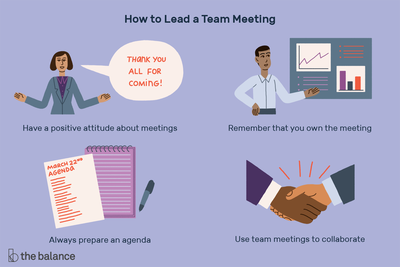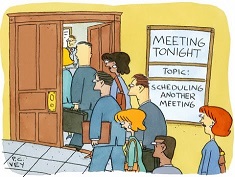Meetings are an essential part of every organization. Yet, at least 50% of meetings today are ineffective. This cartoon on the left may seem silly but is not far from the truth in describing bad meetings. It is essential to your success to learn how to run a successful meeting. Effective meeting management skills will help you successfully share your ideas and thoughts with your audience. It will also help you stand out in your job and build your work reputation.
Whether it is a board meeting, staff meeting, stakeholders meeting, or sales meeting, the purpose of each meeting type is common – sharing information to make key decisions and take action. Here are 5 basic tips on how to run successful meetings and always leave a lasting impression on your audience.
1. Start the Meeting on Time
Be specific and punctual with the meeting timing. Start your meeting within 2 to 3 minutes of start time to be respectful to those who are attending on time. Those who arrive late can catch up on their own. You can help them catch up at the end of the meeting if there is time.
2. Define Meeting Purpose
One of the most important and effective tasks to run a successful meeting is to begin with a description of the purpose of the meeting. By sharing the purpose in the initial five to ten minutes, you may set the foundation, establish rules, and present the terms of reference to define a clear direction for the meeting.
This concept seems simple but is often missed. Many people make the mistake of just sharing status of their work. To an effective meeting purpose, make it specific, achievable, and results in some kind of action during or after the meeting.
3. Encourage Open Discussion ... read more


